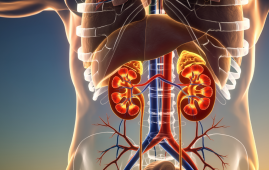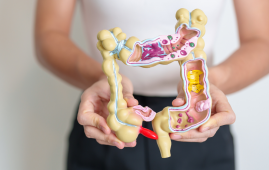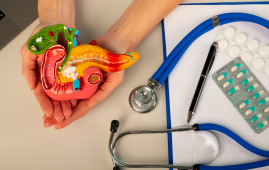

A recent Molecular Psychiatry study looks into the link between maternal oxidative stress during pregnancy and mental issues in children.
Background
Many children develop mental illnesses alongside emotional and behavioral issues (EBP). Anxiety and sadness, as well as neurodevelopmental problems such as autism spectrum disorder (ASD) and attention-deficit/hyperactivity disorder (ADHD), are connected with mental disorders in children.
EBP in childhood can be characterized as internalizing or externalizing. Externalizing EBP is connected with aggression, impulsivity, inattention, hyperactivity, and opposition, whereas internalizing EBP is associated with anxiety, depression, and somatic symptoms.
EBP affects approximately 20% of school-aged children, and the number is predicted to climb due to the coronavirus disease 2019 (COVID-19) pandemic. Previous research has found that EBP has a major impact on children’s education, health, and quality of life.
Emotional illnesses identified throughout adolescence and maturity are also influenced by childhood EBP. As a result, it is critical to recognize and treat EBP in early childhood in order to prevent mental illnesses in adulthood.
Prenatal, perinatal, and postnatal exposure to various environmental variables, such as tobacco smoke and prescription drugs, has an effect on fetal programming, early brain development, and long-term neuropsychiatric effects.
Several studies have found that early-life socioeconomic adversity leads to the development of EBP by inducing downstream metabolic pathways associated with inflammation and oxidative stress (OS). As a result, identifying prenatal risk factors, as well as gaining a better knowledge of the underlying mechanisms connected to EBP, would allow for the development of effective preventive and therapeutic strategies.
OS is characterized by an imbalance in free radical production and antioxidant capability, which results in oxidative damage to macromolecules such as protein, DNA, and ribonucleic acid (RNA). The most recognized biomarker of OS is 8-hydroxy-2′-deoxyguanosine (8-OHdG), a frequent consequence of oxidative DNA damage.
About the Study
The current study looked at the relationship between maternal OS and offspring EBP during pregnancy. Participants in the study were drawn from the Barwon Infant Study (BIS) cohort in Australia, which included 1,074 mother-infant pairs. The study excluded those women who gave birth before 32 weeks of pregnancy or had children with a genetic illness or significant congenital deformity.
Clinical information and biospecimens were obtained at birth, four weeks, three, six, nine, twelve, and eighteen months, as well as two and four years old. Maternal urine samples were taken at the 36-week pregnancy appointment and analyzed using liquid chromatography-mass spectrometry (LC-MS/MS) to detect OS biomarkers.
The Child Behavior Checklist (CBCL) was used to measure EBP in children aged 1.5 to five years. This checklist has 99 items that were graded on a three-point Likert scale from zero (not true), one (somewhat true), and two (extremely true). EBP in children was also assessed using the Strengths and Difficulties Questionnaire (SDQ).
Study Findings
The majority of mothers were over the age of 25 and did not smoke. The researchers looked at the relationship between maternal OS biomarkers such as 8-OHGua and 8-OHdG during pregnancy and long-term total EBP in children. At two and four years old, a greater mat8-OHGua36w was positively linked with children’s overall EBP.
Although there was a positive connection between the oxidative RNA damage biomarker 8-OHGua and EBP in children, there was no such association with the oxidative DNA damage biomarker 8-OHdG.
Increased levels of 8-OHdG were strongly linked to EBP in children, notably the onset of anxiety and depression in childhood. After controlling for potential confounding factors, total EBP estimations changed by less than 10%. A bad relationship exists between mat8-OHdG36w and childhood. A low relationship between mat8-OHdG36w and childhood EBP suggested that this biomarker had limited predictive power in children.
Lower maternal education, residential socioeconomic disadvantage, tobacco smoking, and prescription medication use were among the modifiable risk factors for EBP found. Maternal OS biomarker levels during pregnancy were likewise linked to increased depressed symptoms in children.
Conclusions
Environmental factors such as social and prenatal lifestyle have a substantial impact on the development of EBP in children. This manifestation has been linked to increased levels of 8-OHGua, a biomarker of maternal oxidative RNA damage, during pregnancy. The findings of the study also shed new light on the role of maternal OS stress during pregnancy in the fetal programming of mental illnesses.
For more information: Maternal oxidative stress during pregnancy associated with emotional and behavioral problems in early childhood: Implications for fetal programming. Molecular Psychiatry
doi:10.1038/s41380-023-02284-9
more recommended stories
 36-Week Pre-eclampsia Screening May Reduce Term Risk
36-Week Pre-eclampsia Screening May Reduce Term RiskA New Preventive Strategy for Term.
 Cardiovascular Risk and Sudden Cardiac Death in Diabetes
Cardiovascular Risk and Sudden Cardiac Death in DiabetesRising Sudden Cardiac Death (SCD) Risk.
 Poor Kidney Function and Alzheimer’s Biomarkers Explained
Poor Kidney Function and Alzheimer’s Biomarkers ExplainedPoor kidney function may influence levels.
 Walking Speed Before Hip Replacement Predicts Recovery
Walking Speed Before Hip Replacement Predicts RecoveryNew Evidence Points to a Simple,.
 Neuroblastoma Drug Combo Extends Survival in Models
Neuroblastoma Drug Combo Extends Survival in ModelsA Promising Shift in High-Risk Neuroblastoma.
 How Soybean Oil Impacts Weight Gain and Metabolism
How Soybean Oil Impacts Weight Gain and MetabolismWhy Soybean Oil May Affect Metabolism.
 Coffee and Cognitive Function: Evidence Review
Coffee and Cognitive Function: Evidence ReviewA new narrative review in Cureus.
 Colorectal Cancer Screening Rates Low in Adults 45–49
Colorectal Cancer Screening Rates Low in Adults 45–49Recent UCLA research reveals that colorectal.
 Gut Immune Cells and Long-Lasting Antiviral Protection.
Gut Immune Cells and Long-Lasting Antiviral Protection.Breakthrough Findings on How Gut Immune.
 Mild Pancreatic Duct Dilatation Signals Higher Cancer Risk
Mild Pancreatic Duct Dilatation Signals Higher Cancer RiskEarly Structural Changes Offer Critical Clues.

Leave a Comment